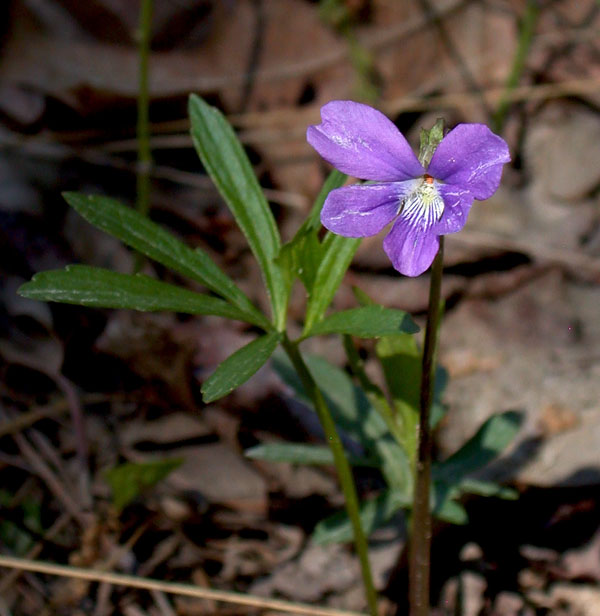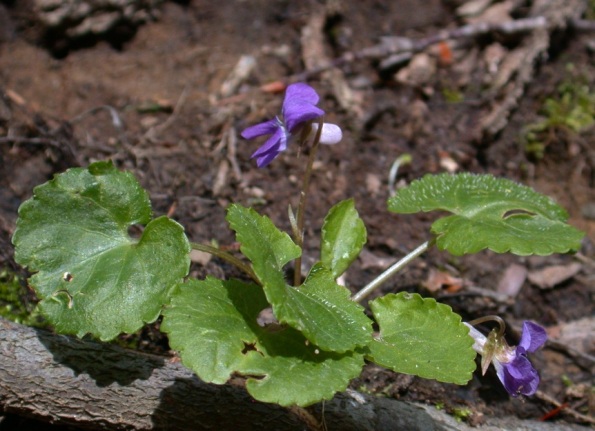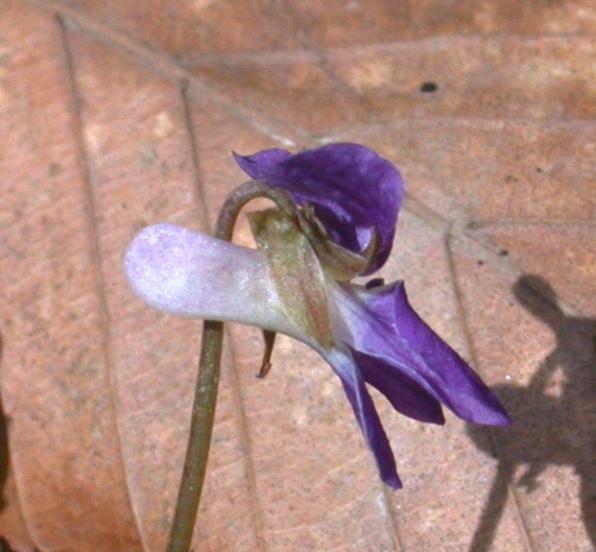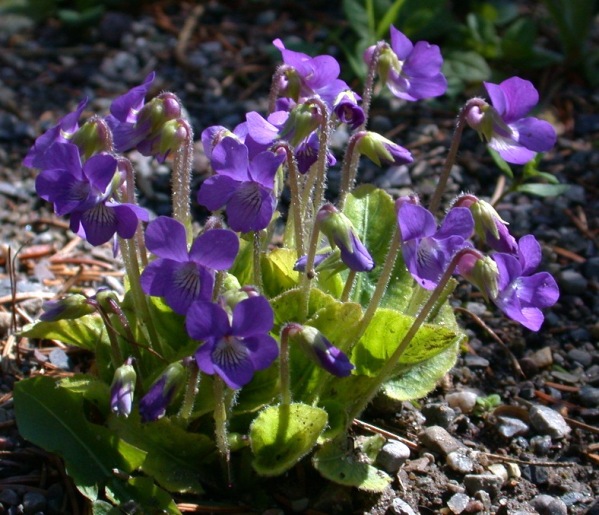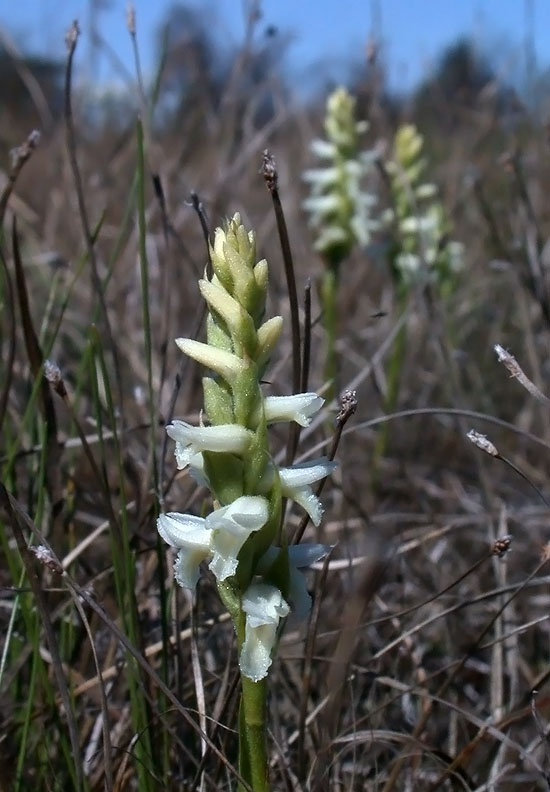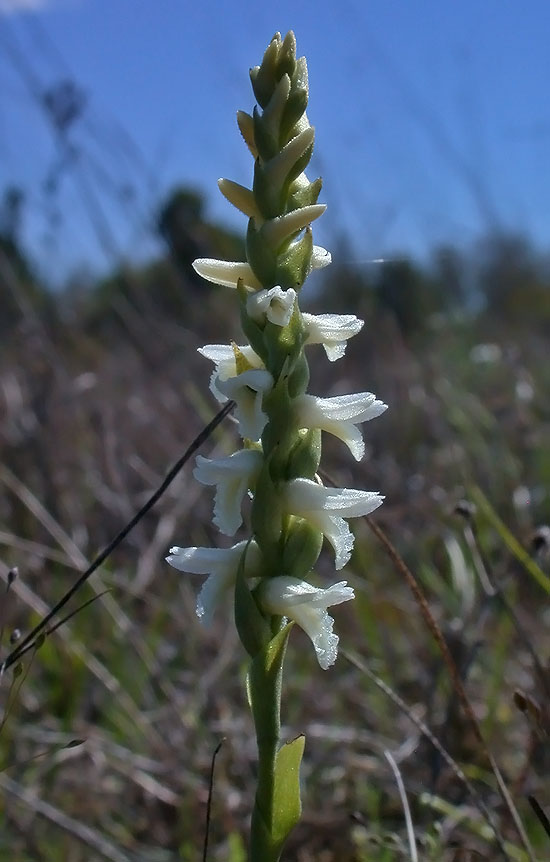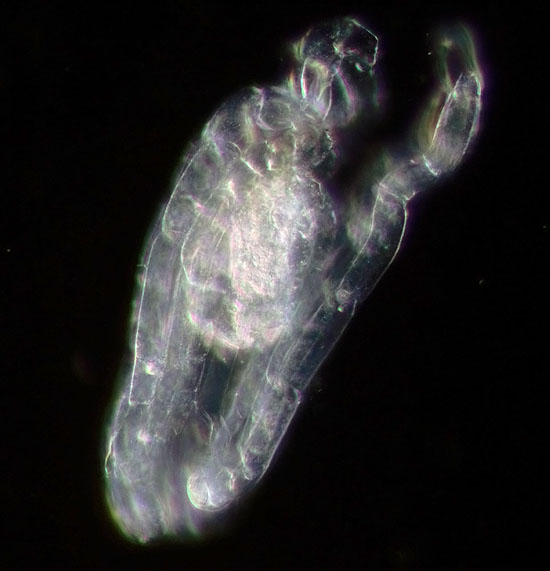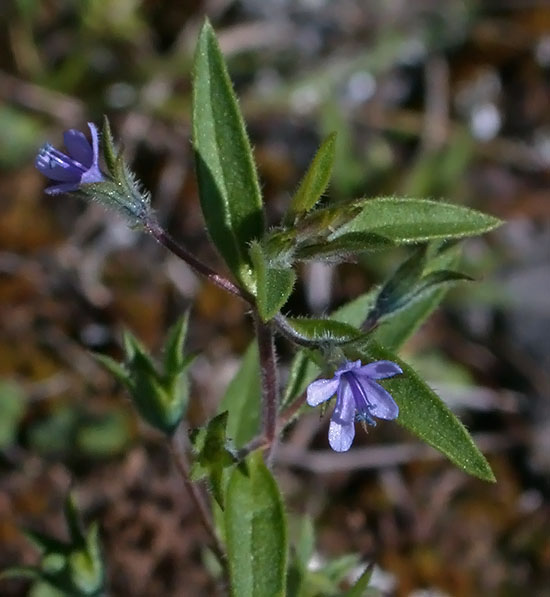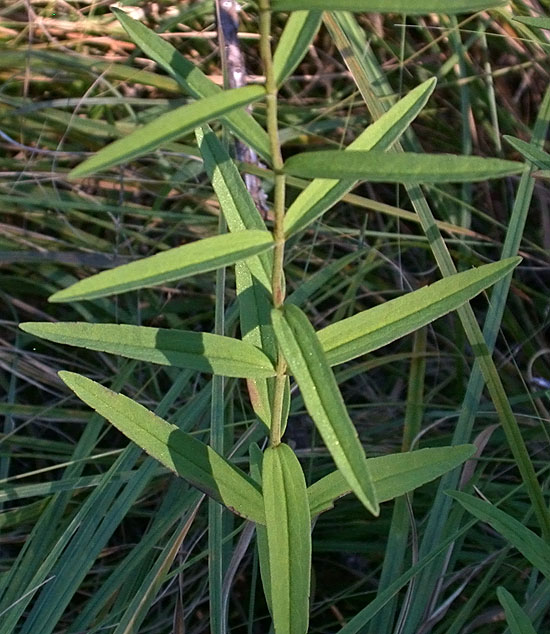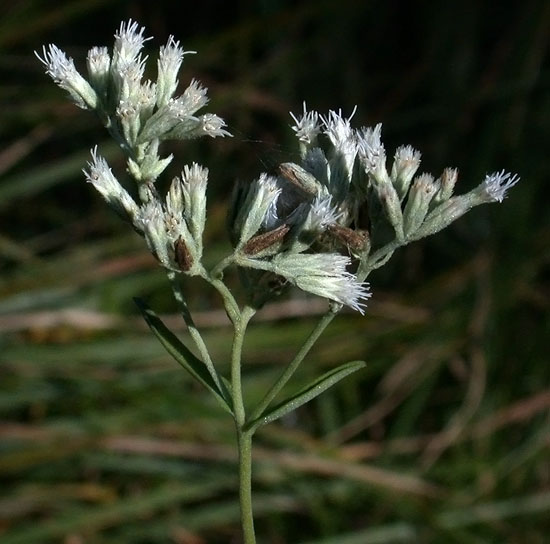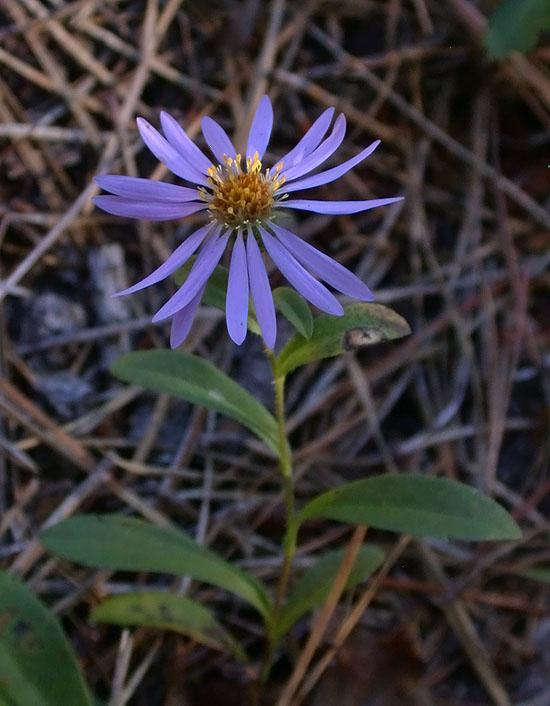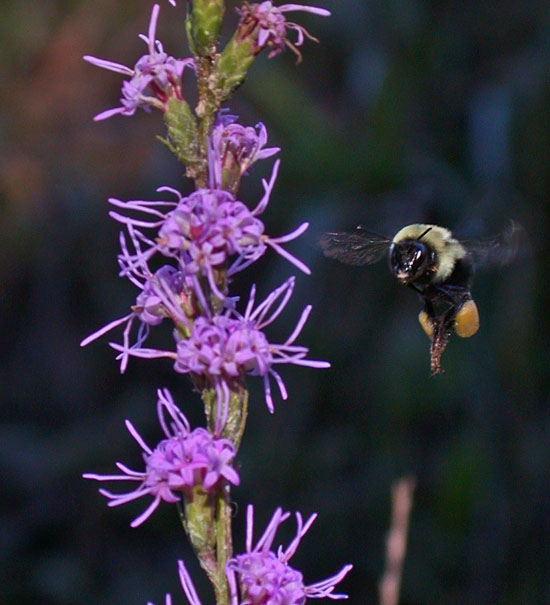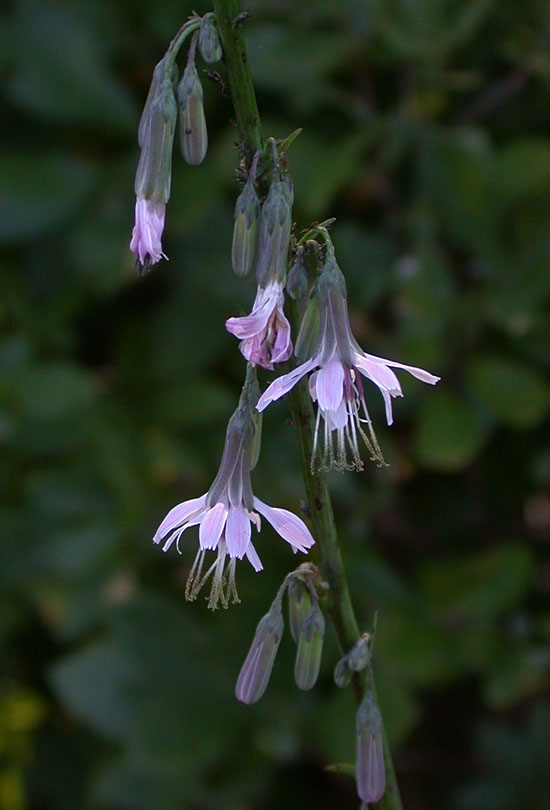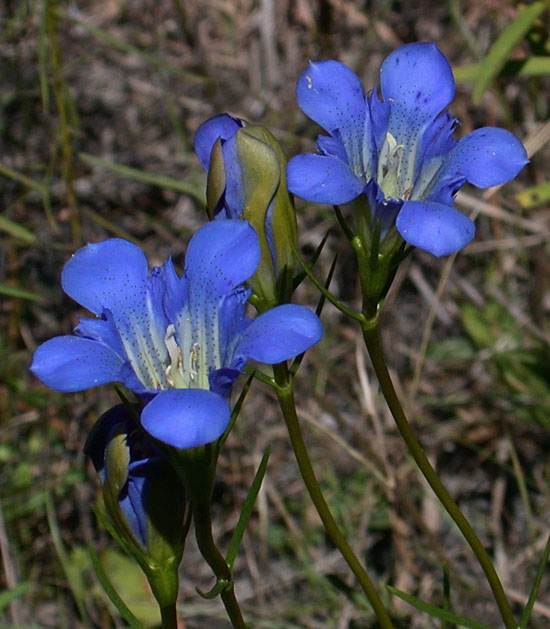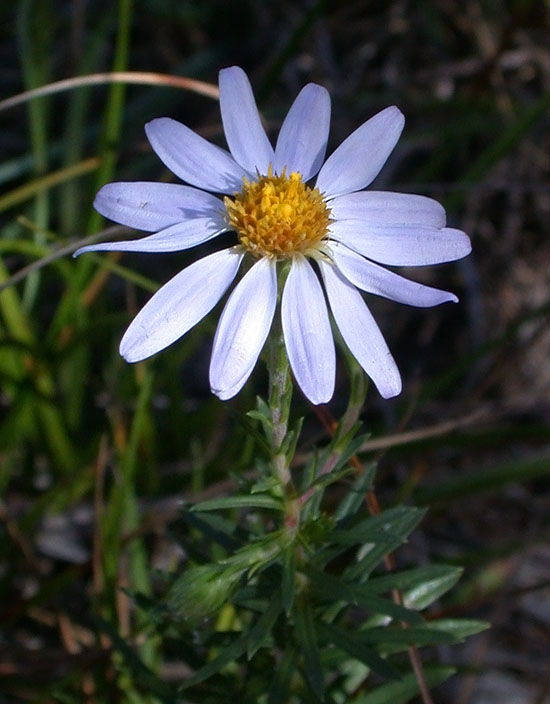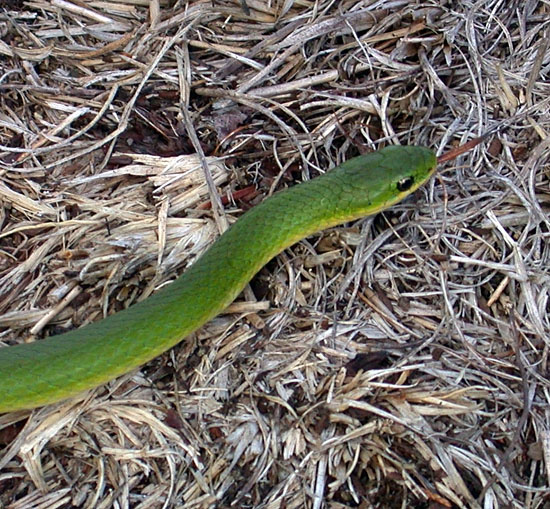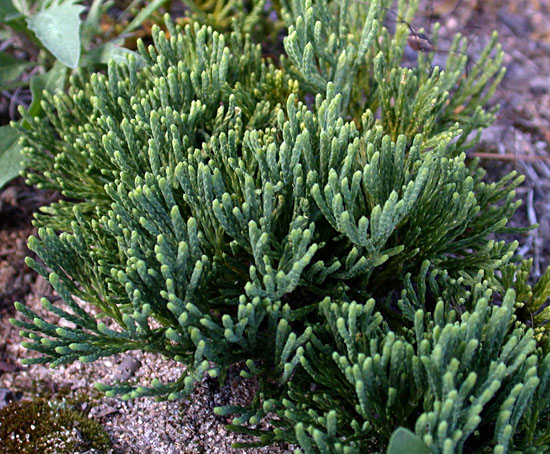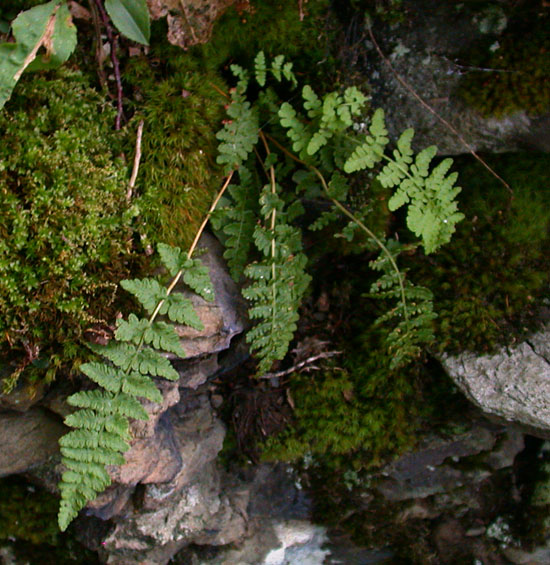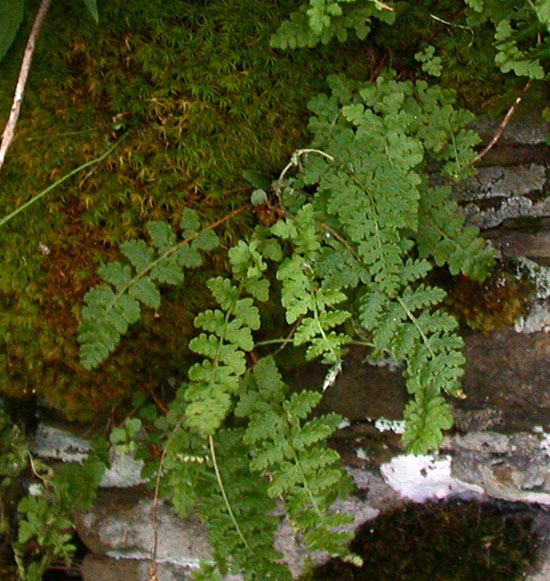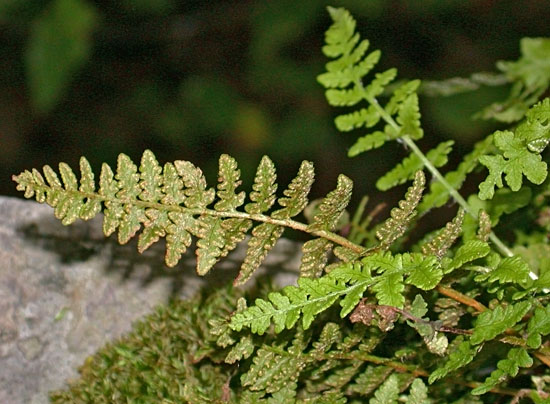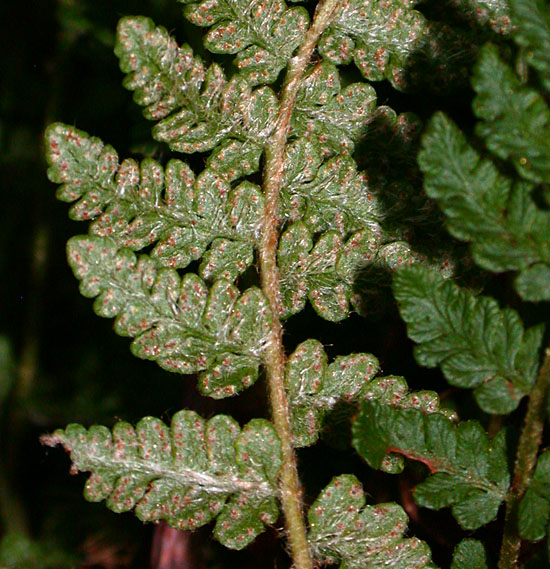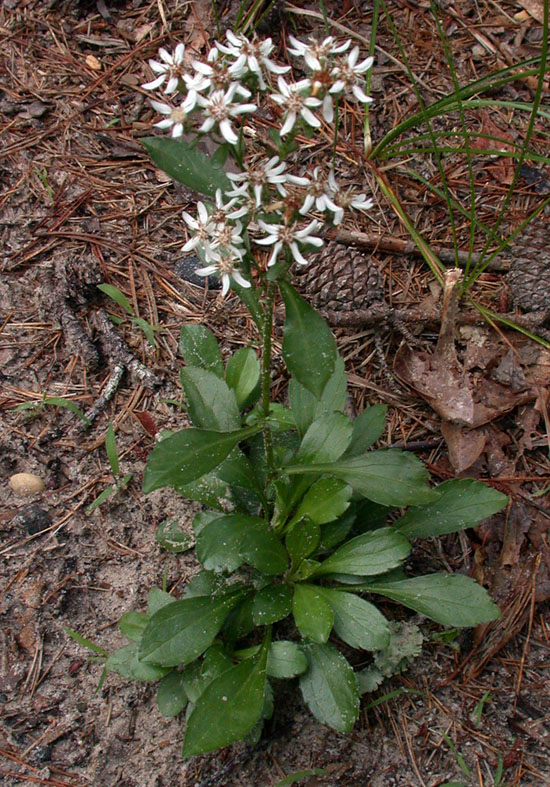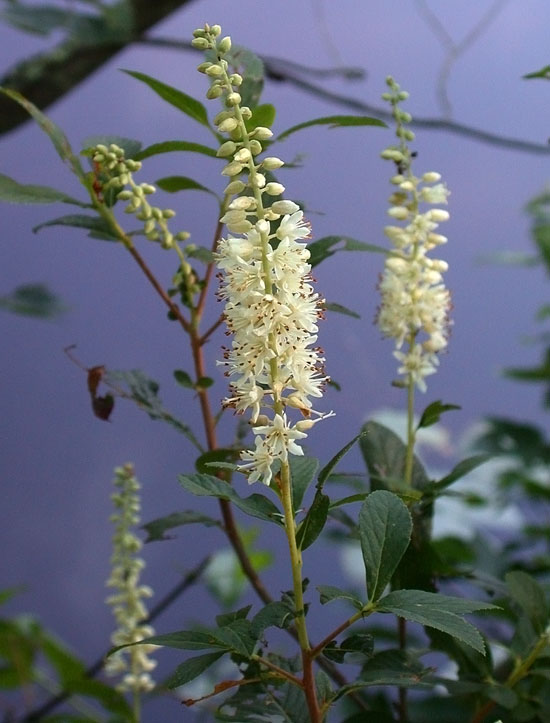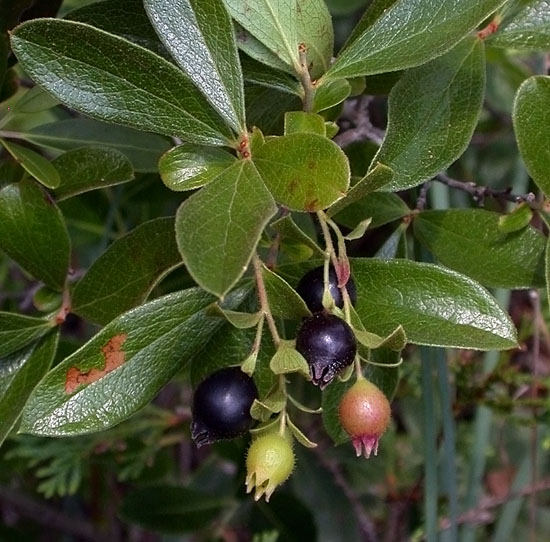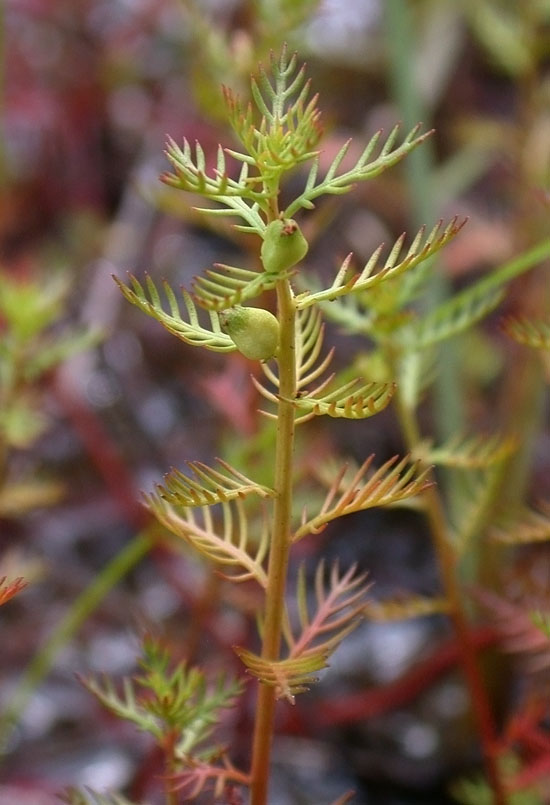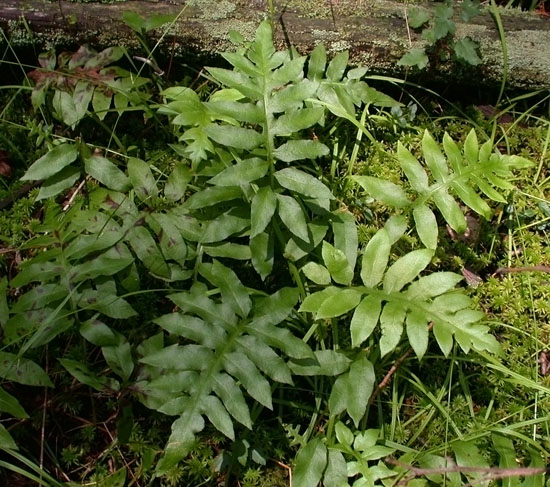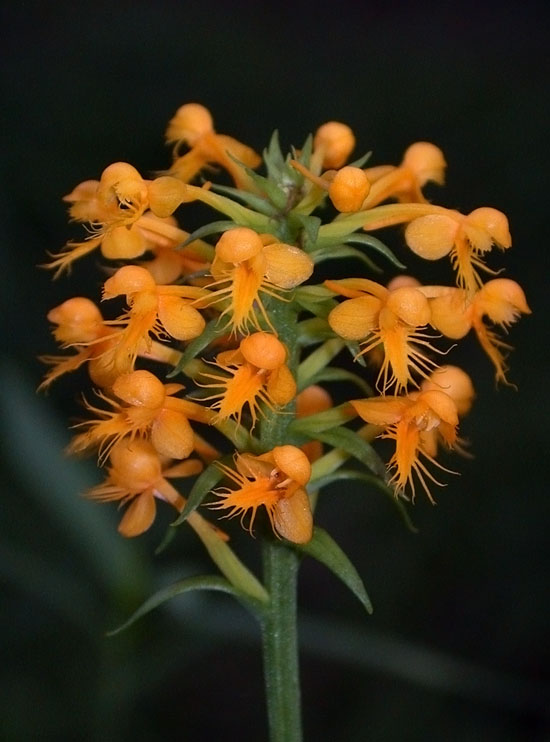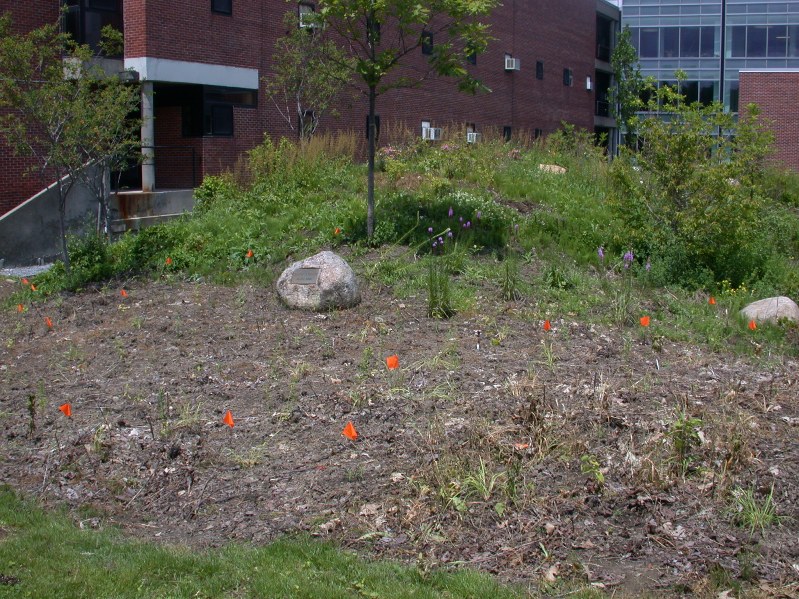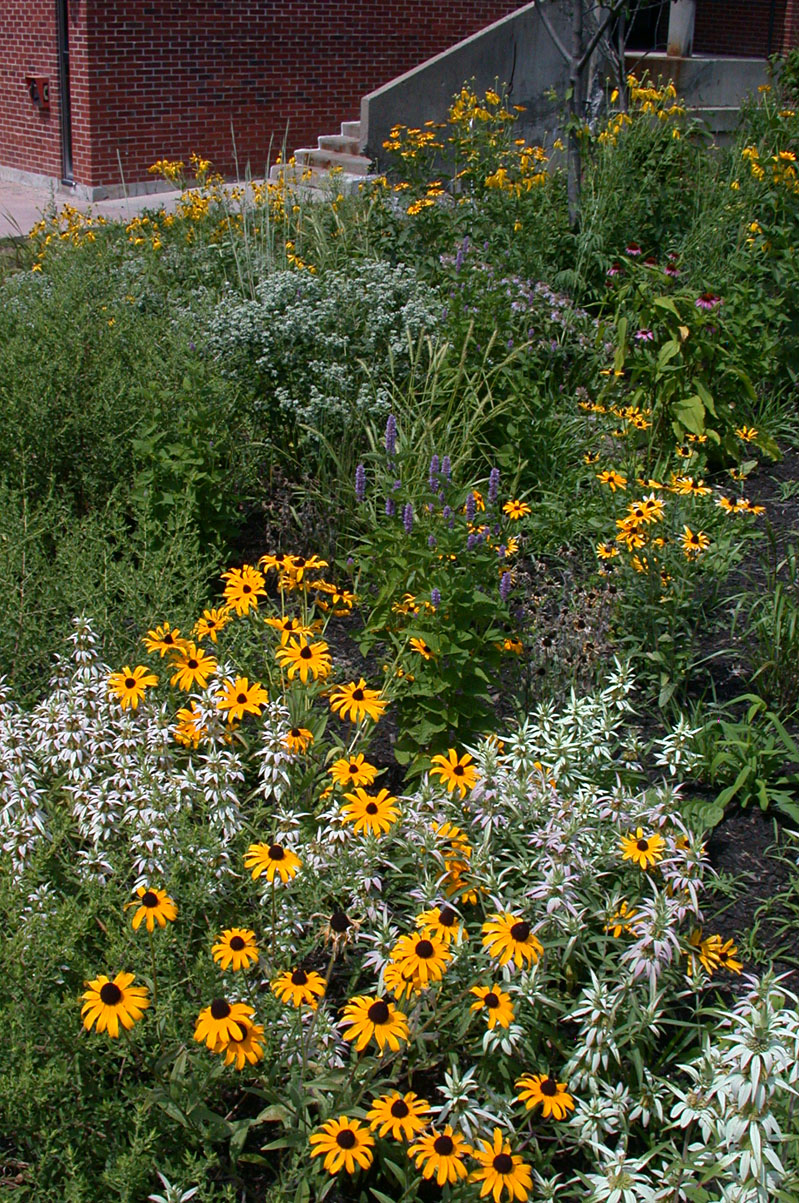Visited the Adirondacks for three days earlier in the week. On the drive up I stopped near Hinckley Reservoir and found Canada burnet (Sanguisorba canadensis) in full bloom.
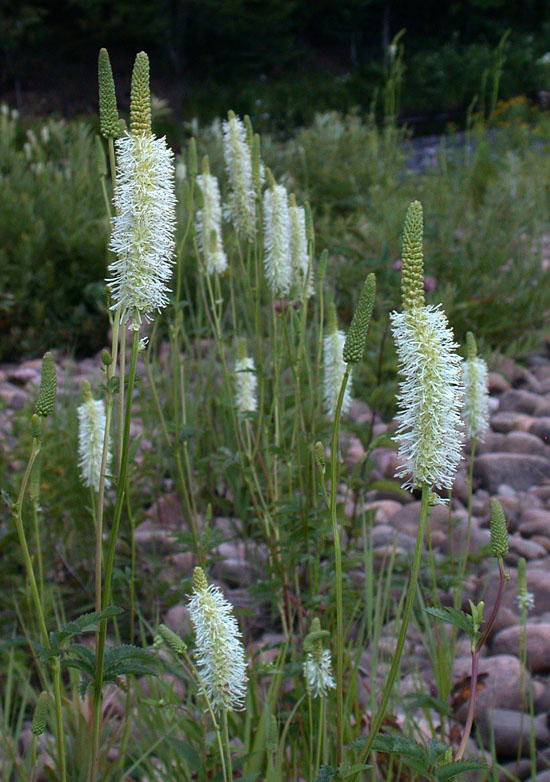
Near Raquette Lake I found dwarf rattlesnake plantain (Goodyera repens) in several places. This one was growing in a clump of the leafy liverwort Bazzania trilobata. Others were found growing in Sphagnum.
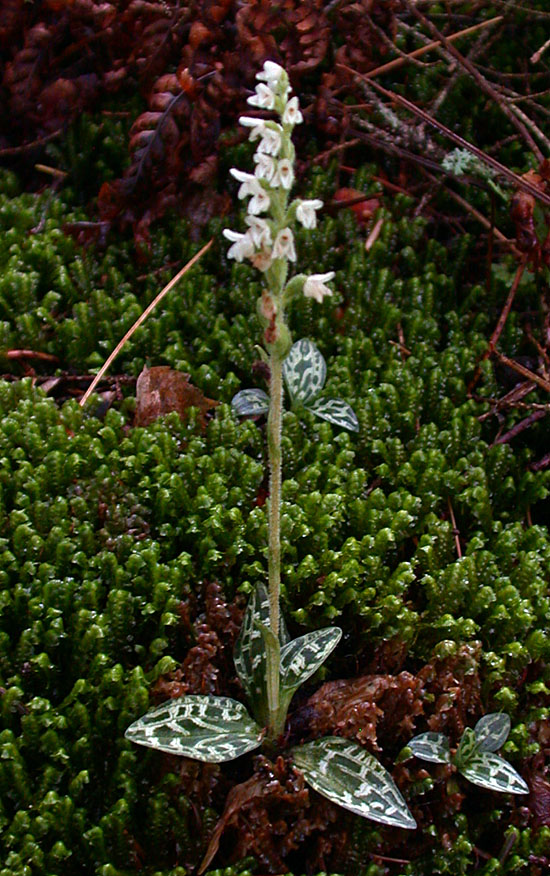
Also found one checkered rattlesnake plantain (Goodyera tesselata). This species is a little bigger than G. repens.

On a dry slope found long-bracted orchid (Coeloglossum viride var. virescens). The petals had withered but the long floral bracts were still evident.
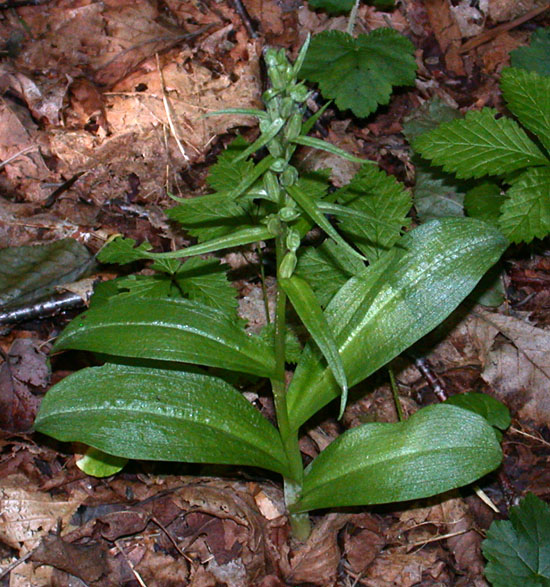
Some capsules of western spotted coralroot (Corallorhiza maculata var. occidentalis) were found nearby. This variety blooms earlier than var. maculata and usually has more reddish capsules, though some plants with yellow capsules were present. These were likely a pale form of var. occidentalis.
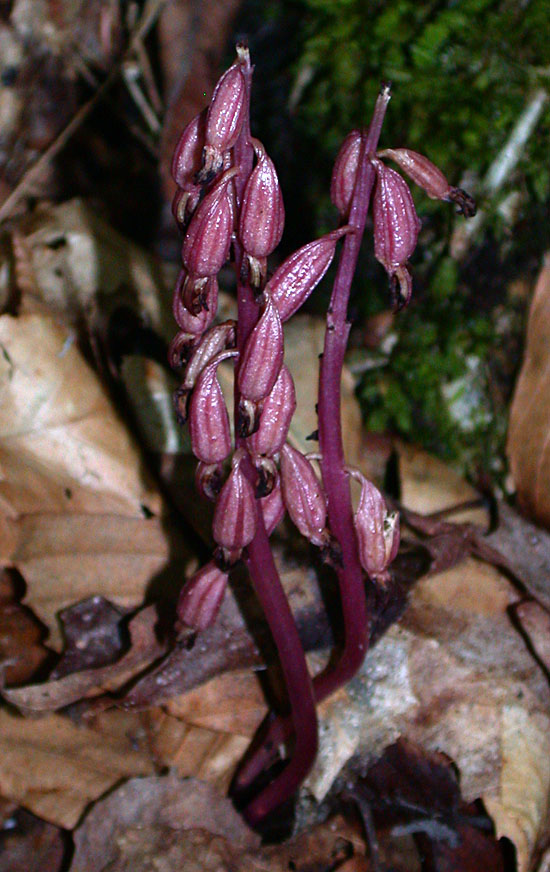
This was a good year to see creeping snowberry (Gaultheria hispidula) in fruit. The fruits taste like wintergreen.
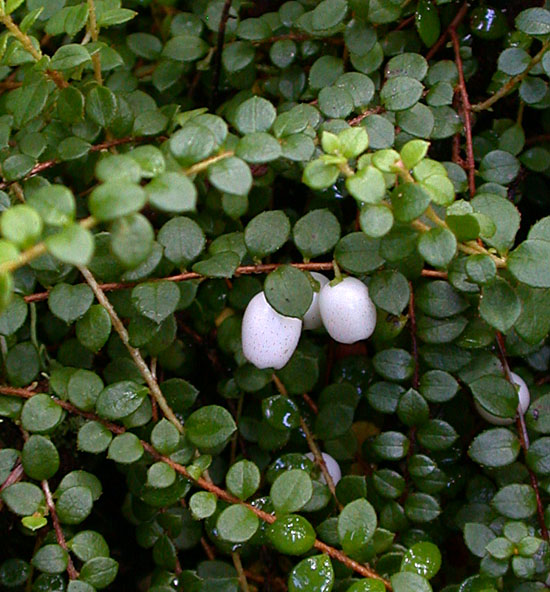
Also found some nice flowering clumps of false violet (Rubus dalibarda).
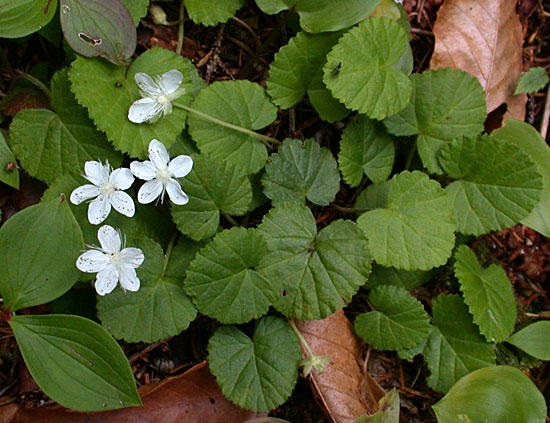
On the last day I made a trip to Whiteface Mountain to see alpine flora. Three-toothed cinquefoil (Sibbaldiopsis tridentata) is often done blooming at lower elevation this late in the summer but were just getting started in the alpine zone.
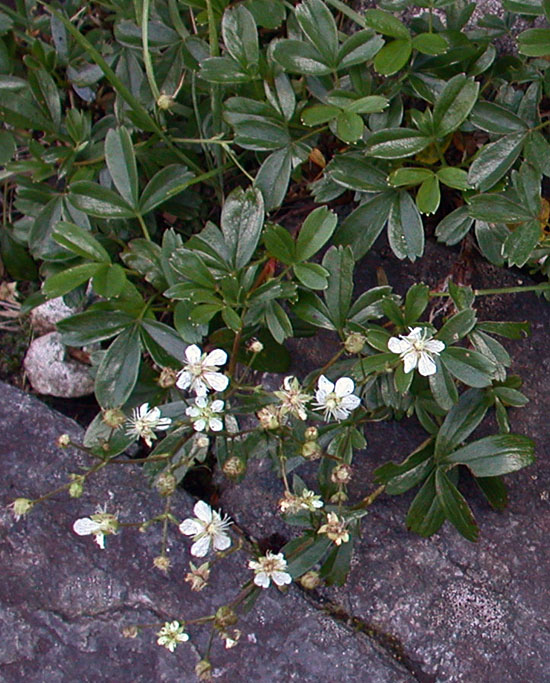
Alpine goldenrod (Solidago leiocarpa) was in full bloom on rocky outcrops.

A Milbert’s tortoiseshell (Aglias milberti) was feeding on one of the plants.
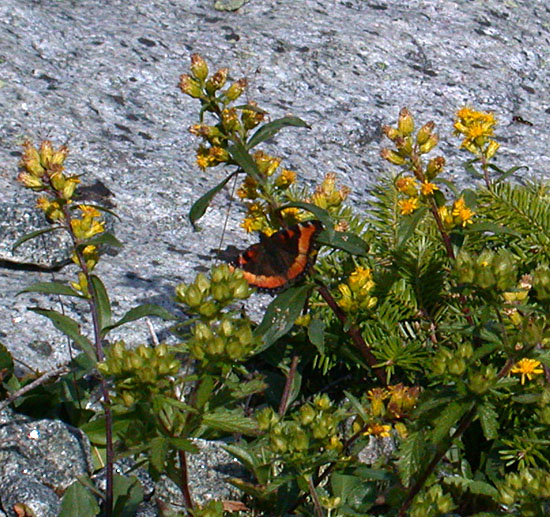
Large-leaved goldenrod (Solidago macrophylla) was abundant in areas with some shade and could also be found along the road further down the mountain.
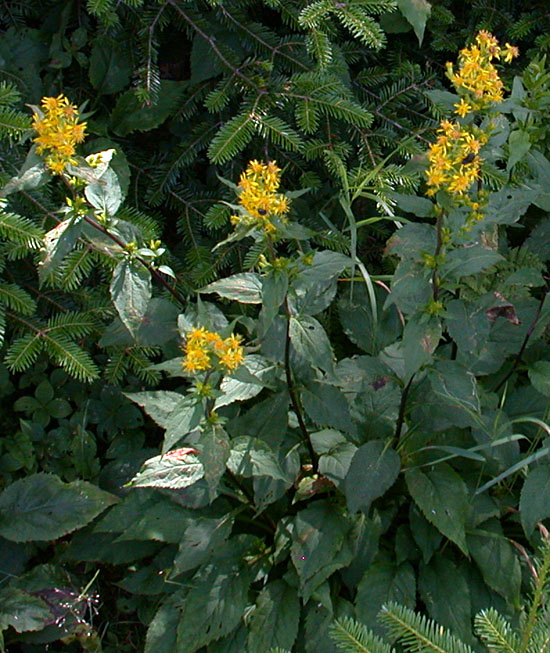
Another species found growing on rock outcrops was mountain stitchwort (Minuartia groenlandica). Plants in the sun were done blooming, possibly due to drought, while those in the shade were still going strong.
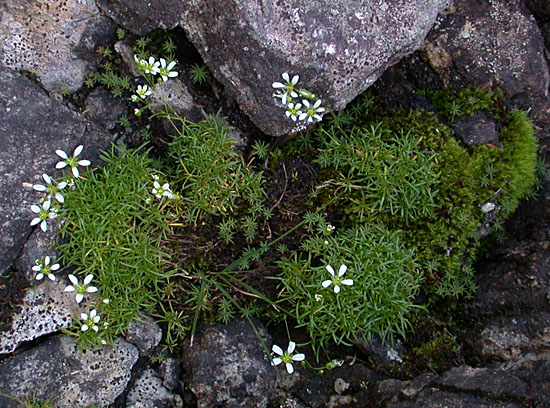
This is northern meadowsweet (Spiraea alba var. latifolia). Alpine plants have been called var. septentrionalis.

Several dwarf shrubs are found in the alpine zone including bearberry willow (Salix uva-ursi).
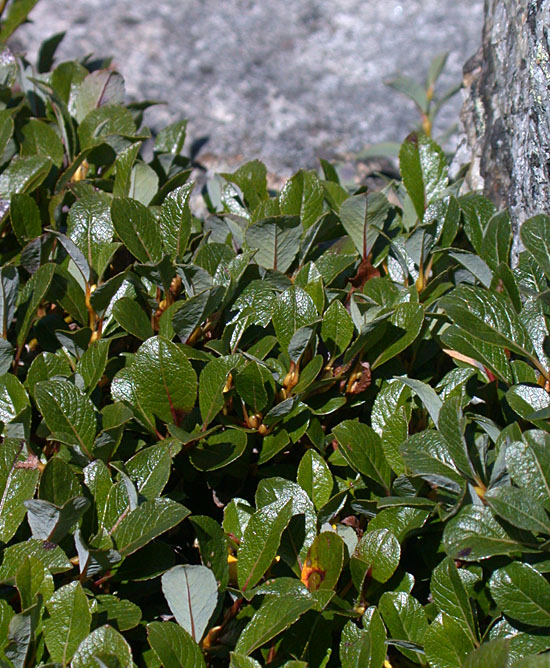
One of the dominant shrubs is Alpine bilberry (Vaccinium uliginosum). The blue-green leaves and 4-merous flowers distinguish this species from lowbush blueberries.
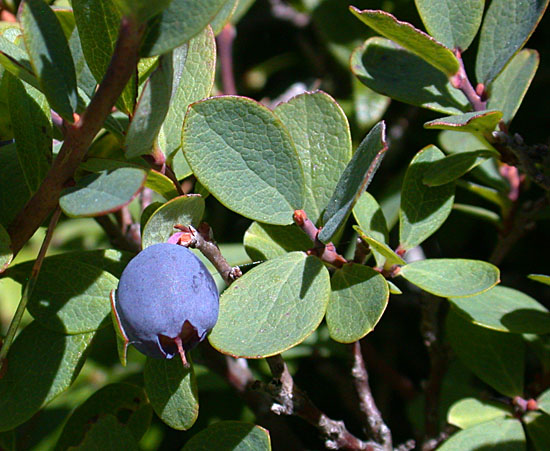
Black crowberry (Empetrum nigrum) is a rare species restricted to rock outcrops in the alpine zone.
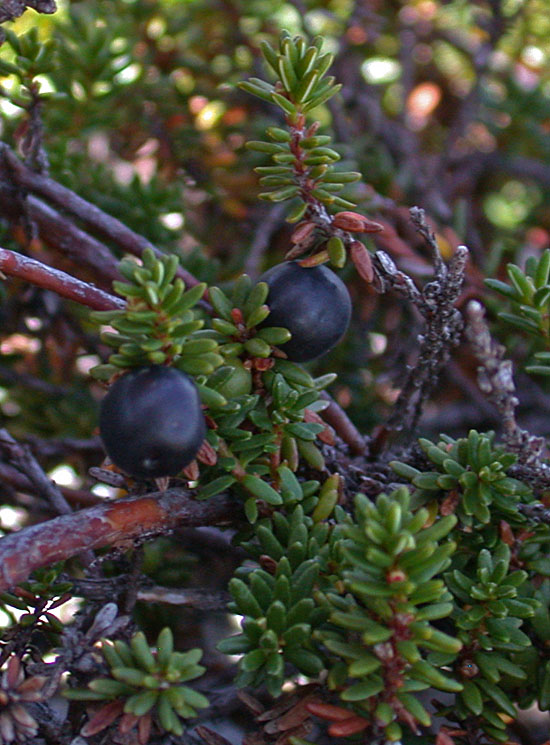
Mountain alder (Alnus viridis ssp. crispa) is another alpine shrub found here.
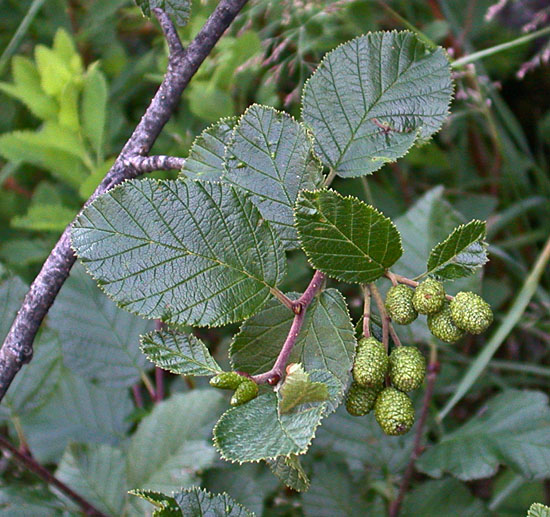
Alpine rattlesnakeroot (Prenanthes boottii) only occurs at the very top of the mountain growing around boulders. Most had already gone to seed though I was able to find a few open flowers. This plant is very rare and unfortunately some of the plants appeared to have been trampled by visitors.
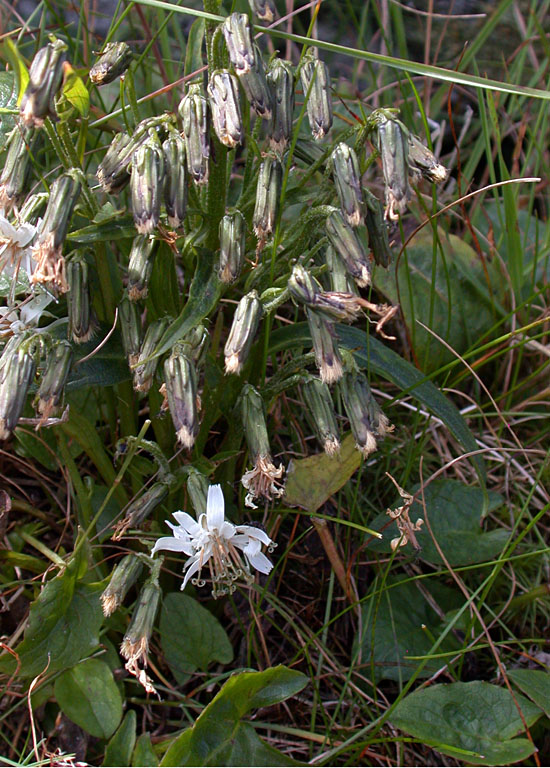
Three-leaved rattlesnakeroot (Prenanthes trifoliata) was also present here and a little further down the mountain. Alpine plants have been called P. nana.

Descending the mountain one passes through an area of dwarfed and deformed trees known as krummholz. The common fern here is mountain woodfern (Dryopteris campyloptera).
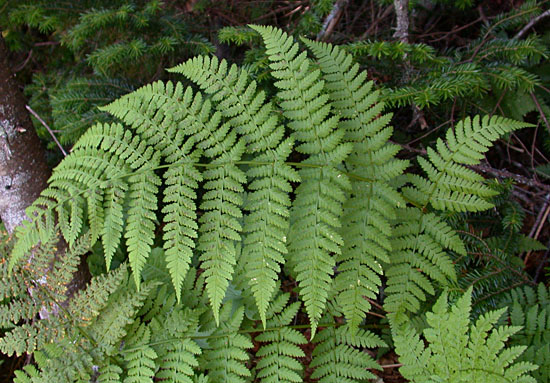
A few alpine clubmosses can also be found here. Appalachian firmoss (Huperzia appressa) is occasional here and in the partial shade provided by boulders in the open areas. It resembles a diminutive shining clubmoss (Heuperzia lucidula) with the addition of gemmae (asexual propagules) produced near the apex of the stem.

A few plants of clasping-leaved twisted-stalk were found in the shade of the krummholz. Apparently this species was found here for the first time just a few days earlier by a group on a New York Flora Association outing.

A species that was relatively abundant along the road leading up to the summit was narrow-leaved gentian (Gentiana linearis). This species was also found growing with the Canada burnet near Hinckley Reservoir.


